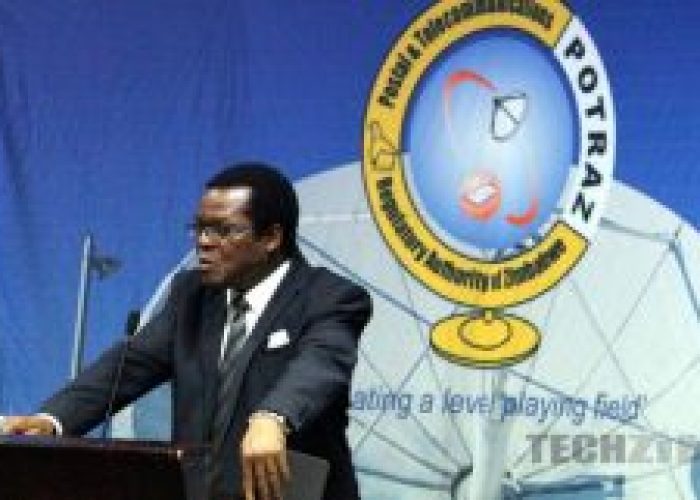



POTRAZ Director General, Gift Machengete answered some questions at the WSIS (World Summit on the Information Society )
Here’s what the
Q: What are the measures that the regulator in Zimbabwe has taken and continues to take, in order to ensure universal access to ICT Services and knowledge for all, in Zimbabwe?
DG: SDG goal 9c on access to ICTs for all by 2030 will remain a pipedream if certain fundamental aspects are not attended to especially in developing countries. Landlocked developing countries appeal to the world for capacitation to accelerate the provision of an enabling environment.
We need funding
for:
HOWEVER DESPITE ALL THE ABOVE
AS A REGULATOR WE HAVE MANAGED TO DO THE FOLLOWING IN ZIMBABWE….
I would like to begin by saying that, the World Bank’s World Development Report 2016, on Digital Dividends indicates that; “even though digital technologies bring benefits to people, businesses, and governments, these benefits are not spreading evenly enough and rapidly enough to allow true global economic growth.” The most affected areas are the marginalised rural communities, which have lagged behind in terms of access and use. To overcome this challenge, the regulator in Zimbabwe is rolling out various ICT access and use programmes.
To start with, we have the Passive Infrastructure project, where twenty (20) Multi Operator Radio Access Network sites have been completed to date. The country needs 350 base stations to ensure total coverage. A partner has since been identified for this project and contract negotiations are underway. In the same vein, the regulator is rolling out base stations under a Built Transfer Operate (BTO) model. Here, operators are requested to erect shared towers on behalf of the regulator and then pay reduced annual licence fees in order to recoup their investment. Similarly, the regulator has introduced infrastructure-sharing regulations into the regulatory framework for MNOs to complement this project.
The regulator is also running an e-learning and schools connectivity programme where to date, it has distributed 4823 computers, 30 servers and 90 printers to 323 rural schools, while a total of 750 schools have been connected. To cater for community members who are out of school, the regulator has set up 145 Community Information Centres and 24 Containerised Village Information Centres. Over 10500 people have been trained at these centres, countrywide, since October last year. To cater for the disabled, the regulator availed customised computer hardware and software to six (6) institutions housing people living with disabilities.
I am glad to say that, Zimbabwe won a grant from the ITU to set up a regional IXP and that project is already up and running with numerous local organisations already peering on it. Additionally, the regulator is promoting local content creation and innovation through an Innovation Drive, where young people are receiving funding for bankable ICT projects.
Meanwhile, the regulator has been consistently lobbying government to remove or lower excise duty on ICT gadgets especially smartphones. This will improve ICT access and use by the rural communities.
Finally, in support of the National Broadband Plan, the regulator has also embedded Broadband roll-out targets as part of the licence conditions for ISPs. In line with these targets, government owned ISP, TelOne, recently launched a multi-million dollar fibre backbone project. This will see the provision of cheaper internet at higher bandwidths, across the country.
Q: What approaches are available to increase Internet access and digital literacy among unserved and underserved rural communities?
DG: Article 5 of the 2015 United Nations General Assembly established the link between WSIS and the 2030 Sustainable Development Goals (SDGs). Goal 9c of the SDGs stresses the need to ‘significantly increase access to ICT and strive to provide universal and affordable access to the Internet
Firstly,
there is need for sound regulatory interventions, to attract investments in the ICT sector. Regulations
should also ensure that prices of ICT products are affordable. On that note, I
am happy that Orange recently launched the Sanza smartphone, which costs only
20USD. Relatedly, plans by Mara group to start full-scale smartphone
manufacturing in Africa are expected to push the prices of smartphones down.
There
is also need for a good national ICT infrastructure backbone supported by a
robust National Broadband Plan. This can be complimented by both Private-
Public partnerships between USFs and operators and Private – Private
Partnerships between operators and tech giants.
For example, there could be partnerships between operators and tech
giants, such as Facebook, to launch free connectivity services for the benefit
of marginalised communities.
Additionally,
there is need to create local content which would significantly reduce costs of using the internet
and even earn the content creators revenue, when this content is redistributed
to other parts of the world. The evolution and wide usage of Web 2.0 tools,
allowing ordinary users to become contributors and content developers, offers
an opportunity for wide availability of local content in a variety of
languages.
Local content creation
can be supported by the establishment of Internet Exchange Points. IXPs can
also improve
Internet quality and affordability in local communities by strengthening local
Internet connectivity, improving competitiveness, and can also serve as hubs
for technical activity.
Relatedly, there is need to make content available in local languages
for it to have a wider reach. According to the World Wide Web Technology
Surveys 2018 statistics, approximately 53.4% of Web content is in English, whereas only 20% of the world’s population speak that language. All
the other languages share 46.6% of Web content despite having 80% of the world
population.
It is also important to use appropriate technologies depending on
terrain and distance from fibre links. This will entail savings on cost of
internet roll-out. Similarly, appropriate assistive hardware and software
should also be availed to vulnerable groups such as people living with
disabilities. It would be of no use to avail
computers to the disabled with no assistive hardware and software
Awareness campaigns on the need for digital literacy and on the
advantages of ICTs to communities are important as they create the appetite to
learn how to use ICTs. These should be followed up by the actual training in
basic computer appreciation skills as a foundation for use.
Lastly, but not least important, is Rural Electrification as an enabler
for ICT use and access. ICT gadgets run on electrical energy and without it
there cannot be any ICT access and use. Therefore, rural electrification
becomes an integral component in the ICT access and use matrix. In fact, others
contend that rural electrification programmes should start and ICT interventions
should follow.
The post QA: POTRAZ Director General On Access To Information & Digital Literacy @ WSIS Forum 19 appeared first on Techzim.